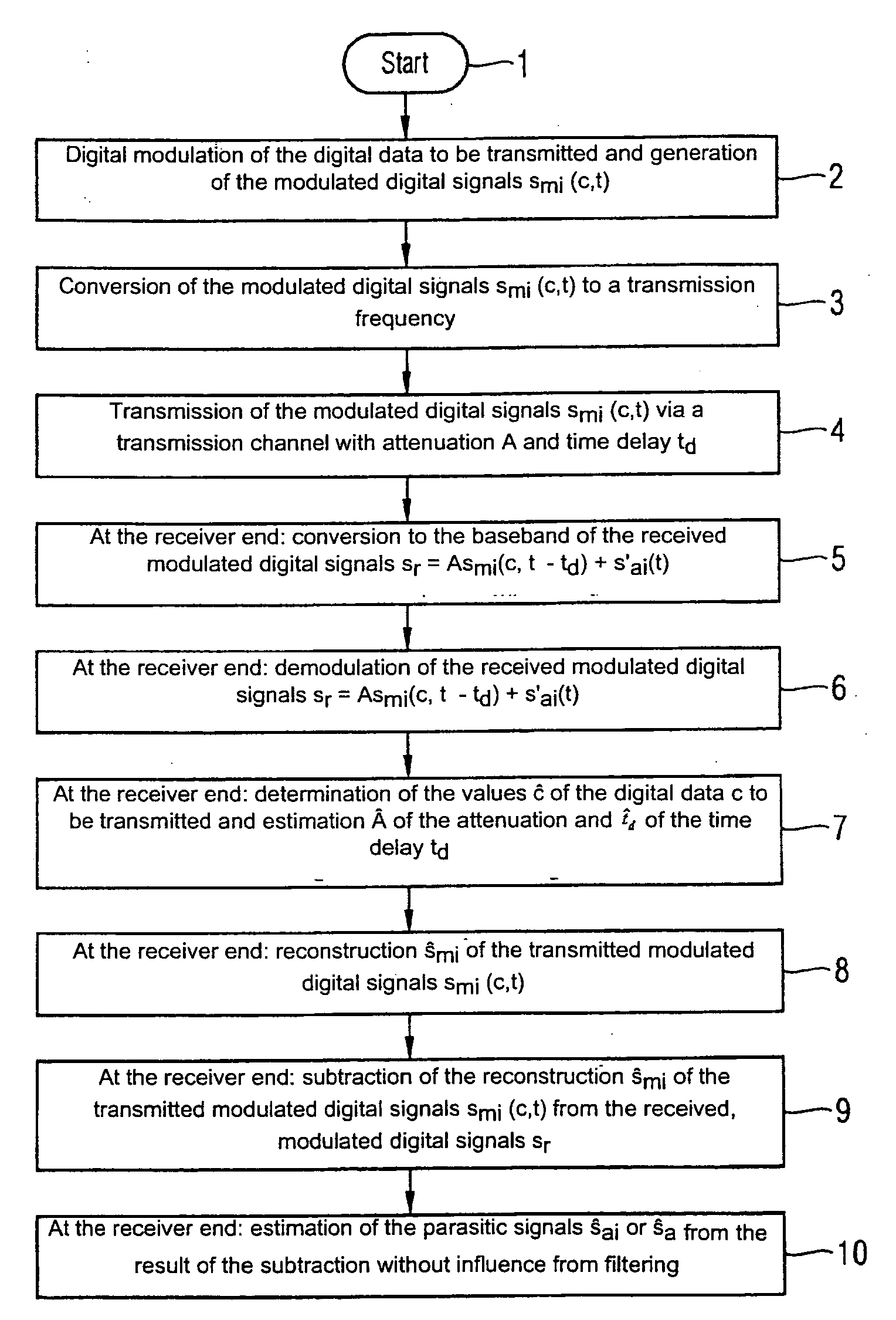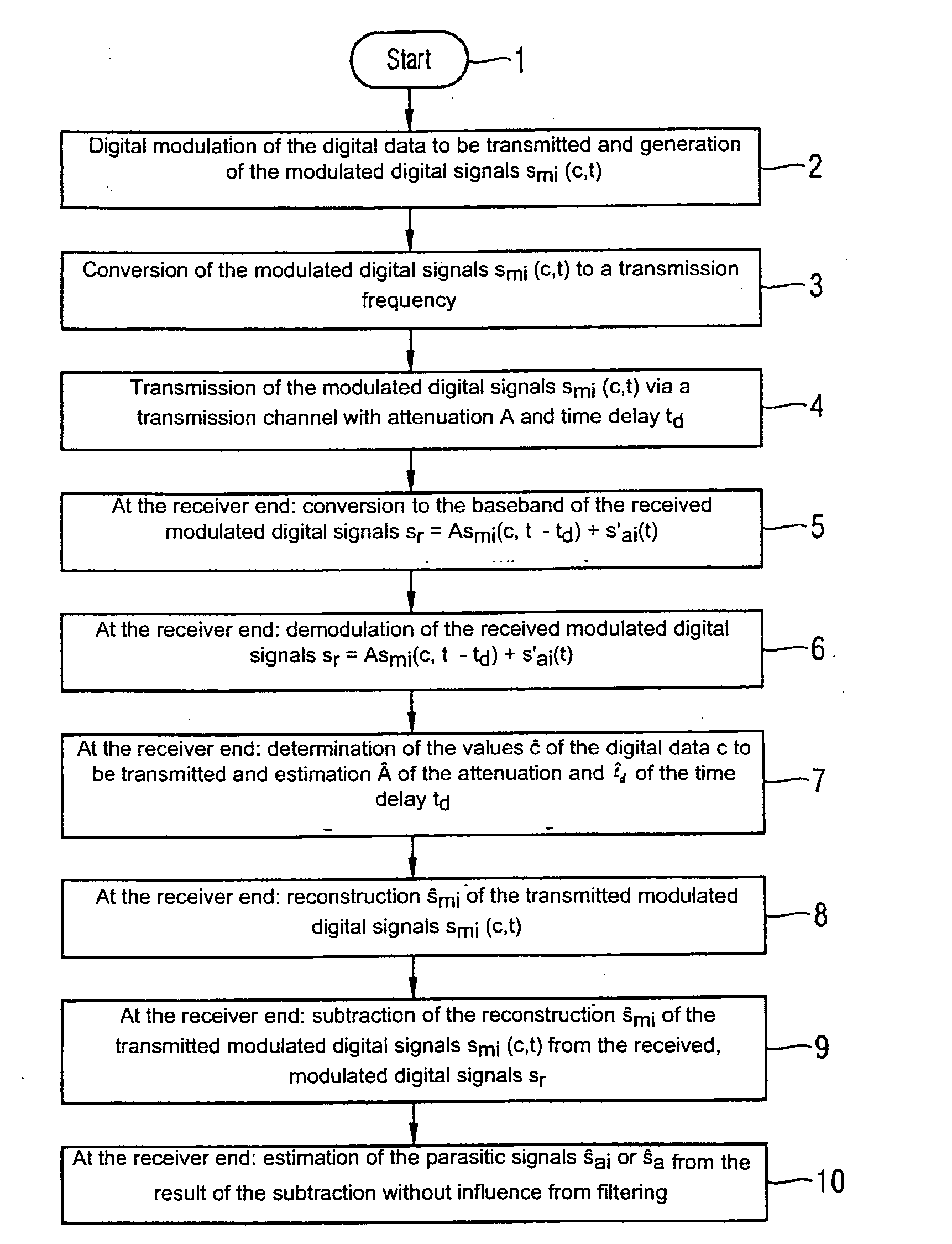Method for deriving parasitic signals from modulated digital signals
- Summary
- Abstract
- Description
- Claims
- Application Information
AI Technical Summary
Benefits of technology
Problems solved by technology
Method used
Image
Examples
Embodiment Construction
[0036]The method begins with an initial step 1. In a second method step 2, a modulated digital signal sm is generated by digital modulation (e.g. PSK, Q-PSK, QAM, etc.) from digital data to be transmitted, by using a modulation schema. In doing so, for example, the modulated digital signal sm can be represented as a linear combination of N signals sm1, sm2, . . . , smN with a specific modulated signal smi being determined by an index i=1, 2, . . . , N. Each of the modulated digital signals smi in this case corresponds to specific data c, with it being possible for the modulated digital signals smi, for example, to be also represented as functions smi(c, t) with the parameters c and t for a time characteristic and it being assumed that the signals smi(c, t) are, for example, interference-free or ideal.
[0037]In a third method step 3, the modulated digital signals smi(c, t) are converted to a transmission frequency before transmission, i.e. the signals smi(c, t) are converted from a ca...
PUM
 Login to view more
Login to view more Abstract
Description
Claims
Application Information
 Login to view more
Login to view more - R&D Engineer
- R&D Manager
- IP Professional
- Industry Leading Data Capabilities
- Powerful AI technology
- Patent DNA Extraction
Browse by: Latest US Patents, China's latest patents, Technical Efficacy Thesaurus, Application Domain, Technology Topic.
© 2024 PatSnap. All rights reserved.Legal|Privacy policy|Modern Slavery Act Transparency Statement|Sitemap



